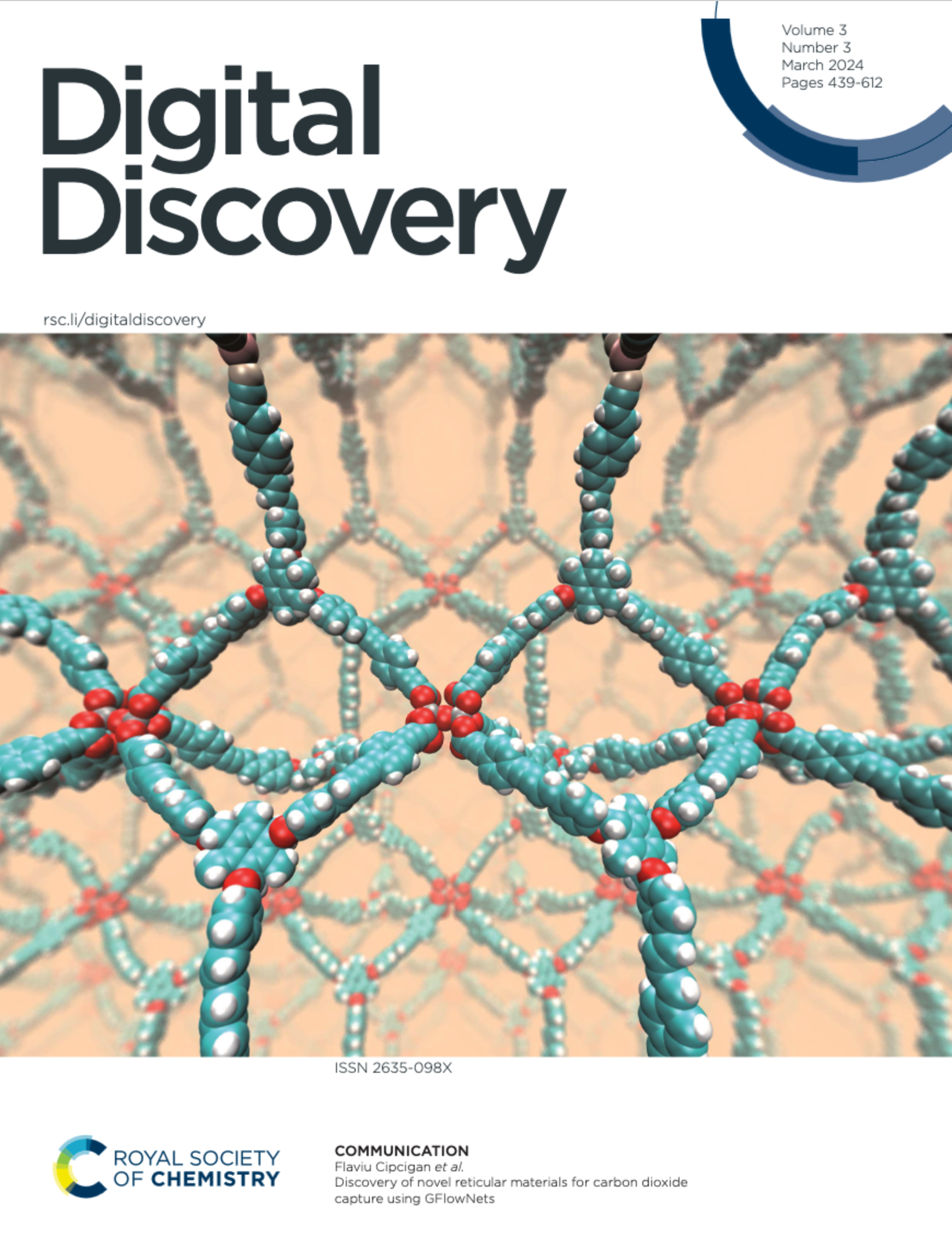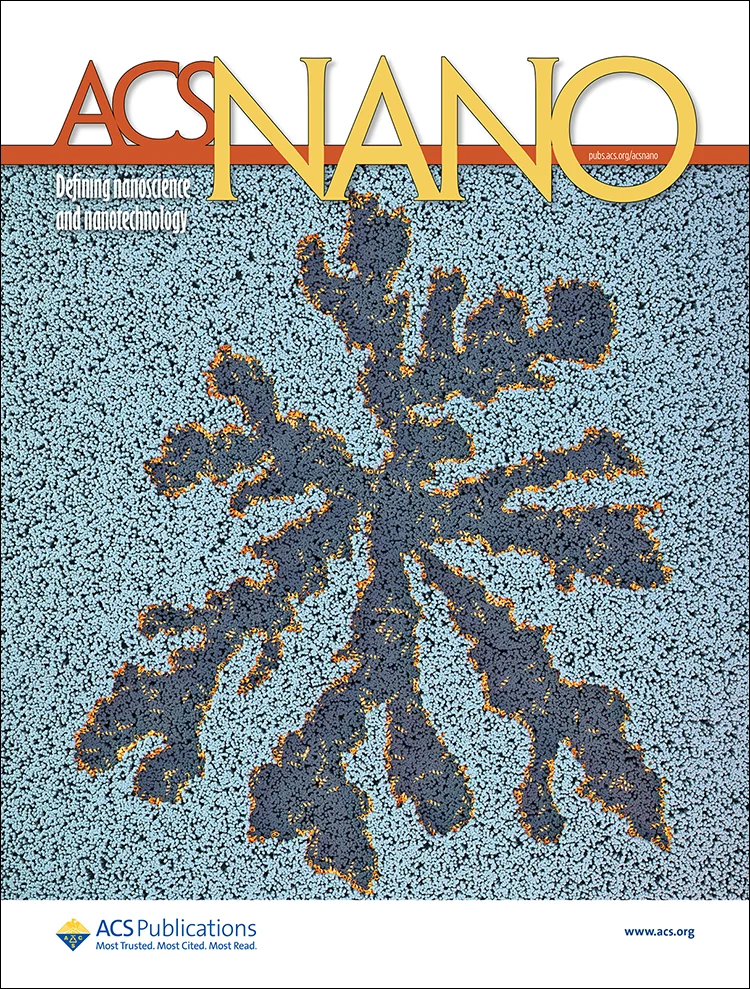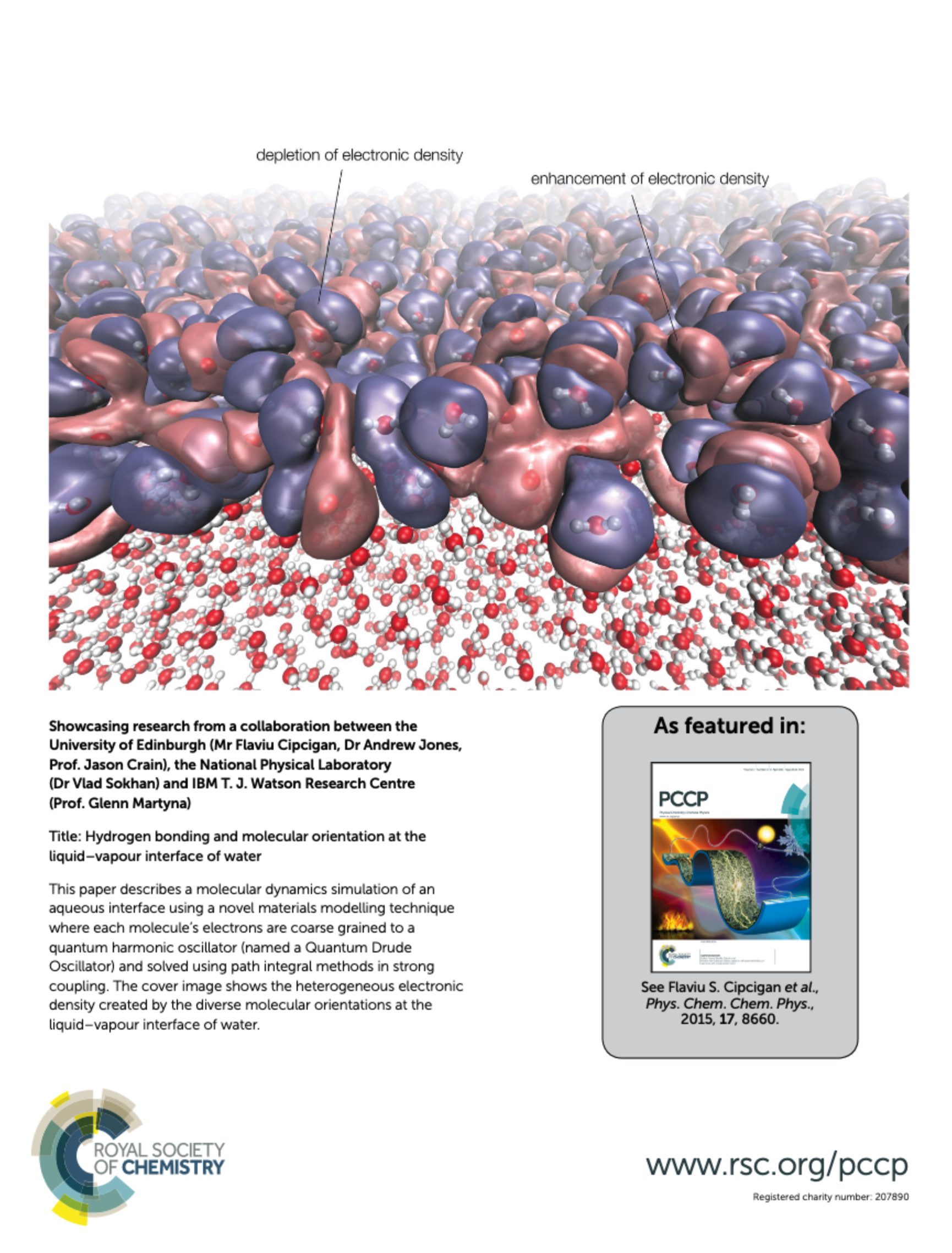
Discovery of novel reticular materials for carbon dioxide capture using GFlowNets
We train GFlowNets to design reticular materials such as metal organic frameworks. We identify materials outperforming all materials in the CoRE2019 reference database in terms of their simulated carbon dioxide working capacity.
Chemical space analysis and property prediction for carbon capture solvent molecules
We propose a new fingerprint and data set (ccs-98) for carbon capture solvents.
Machine Guided Discovery of Novel Carbon Capture Solvents
We combine a simple, rapid laboratory assay for CO2 absorption with a machine learning based molecular fingerprint to discover new carbon capture amines. One amine is a sugar derivative, thus potentially cheap to produce and biodegradable.
A Framework for Toxic PFAS Replacement based on GFlowNet and Chemical Foundation Model
We show that GFlowNets combined with Foundation Models can be a practical framework for discovering new small molecules that replace toxic PFAS compounds.
Symbolic Learning for Materials Discovery
We introduce a SyMDis, a symbolic learner that identifies near-optimal materials from large databases.
SyMDis learns interpretable rules which achieve zero-shot generalisation to unseen datasets.

Switching Cytolytic Nanopores into Antimicrobial Fractal Ruptures by a Single Side Chain Mutation
A peptide designed using simulation forms fractal pores in the membranes of bacteria. The pores turn back to circular by modifying a single amino acid.
Accelerated antimicrobial discovery via deep generative models and molecular dynamics simulations
An autoencoder pre-trained on a dataset of antimicrobial peptides and fine-tuned to generate antimicrobial peptides. The top candidates are validated using simulation and tested in the lab. Two displayed high potency against diverse Gram-positive and Gram-negative pathogens (including multidrug-resistant Klebsiella pneumoniae) and a low propensity to induce drug resistance in Escherichia coli. Both peptides have low toxicity, as validated in vitro and in mice.
Membrane Permeability in Cyclic Peptides is Modulated by Core Conformations
Simulations reveal new guiding rules for the design of permeable cyclic peptides, focused on their core conformations.
MacroConf – dataset & workflows to assess cyclic peptide solution structures
We report a new dataset of solution structures for cyclic peptides and assess how well experimental NOE constraints are predicted by computational methods.
Membrane Binding of Antimicrobial Peptides Is Modulated by Lipid Charge Modification
Simulations reveal how certain bacteria form resistance to antibiotics through modifying the composition of the lipids in their cell walls.
Accelerating molecular discovery through data and physical sciences: Applications to peptide-membrane interactions
Perspective paper on combining AI and simulation to discover new antimicrobials.

Electronic coarse graining is a technique for molecular dynamics simulations which represents electrons using a quantum harmonic oscillator.
It's been described as a "soaring success" and "arguably the most powerful technique for accurate and efficient calculation of forces between molecules".
Electronically coarse-grained molecular dynamics using quantum Drude oscillators
A molecular dynamics algorithm which accurately models dispersion interactions. These are hard to model with conventional techniques.
Electronically coarse-grained model for water
A new interatomic potential for water based on electronic coarse-graining.
Hydrogen bonding and molecular orientation at the liquid–vapour interface of water
Electronically coarse-grained water reveals a bonding asymmetry, hypothesized to be the molecular origin of water's surface properties.
Signature properties of water: Their molecular electronic origins
Electronically coarse-grained water accurately predicts liquid–gas phase equilibria from freezing to the critical point.
Structure and hydrogen bonding at the limits of liquid water stability
Electronically coarse-grained water used to discover (a) a link between the anomalous thermal expansion of water and the behaviour of its second coordination shell and (b) an anomaly in hydrogen bonding which persists from the high temperature limit of liquid water to its supercooled regime.
Molecular-Scale Remnants of the Liquid-Gas Transition in Supercritical Polar Fluids
Electronic coarse-grained water reveals a trace of the liquid-gas transition into the supercritical region as a discontinuity in physical properties.
Electronic coarse graining enhances the predictive power of molecular simulation allowing challenges in water physics to be addressed
Review article focusing on software implementation of electronic coarse-graining.
Electronic coarse graining: Predictive atomistic modeling of condensed matter
Reviews of Modern Physics article on electronically coarse-grained water, serving as the main reference for the technique.
Electronically coarse grained molecular model of water
Flaviu Cipcigan's thesis summarising model construction and properties across the phase diagram.